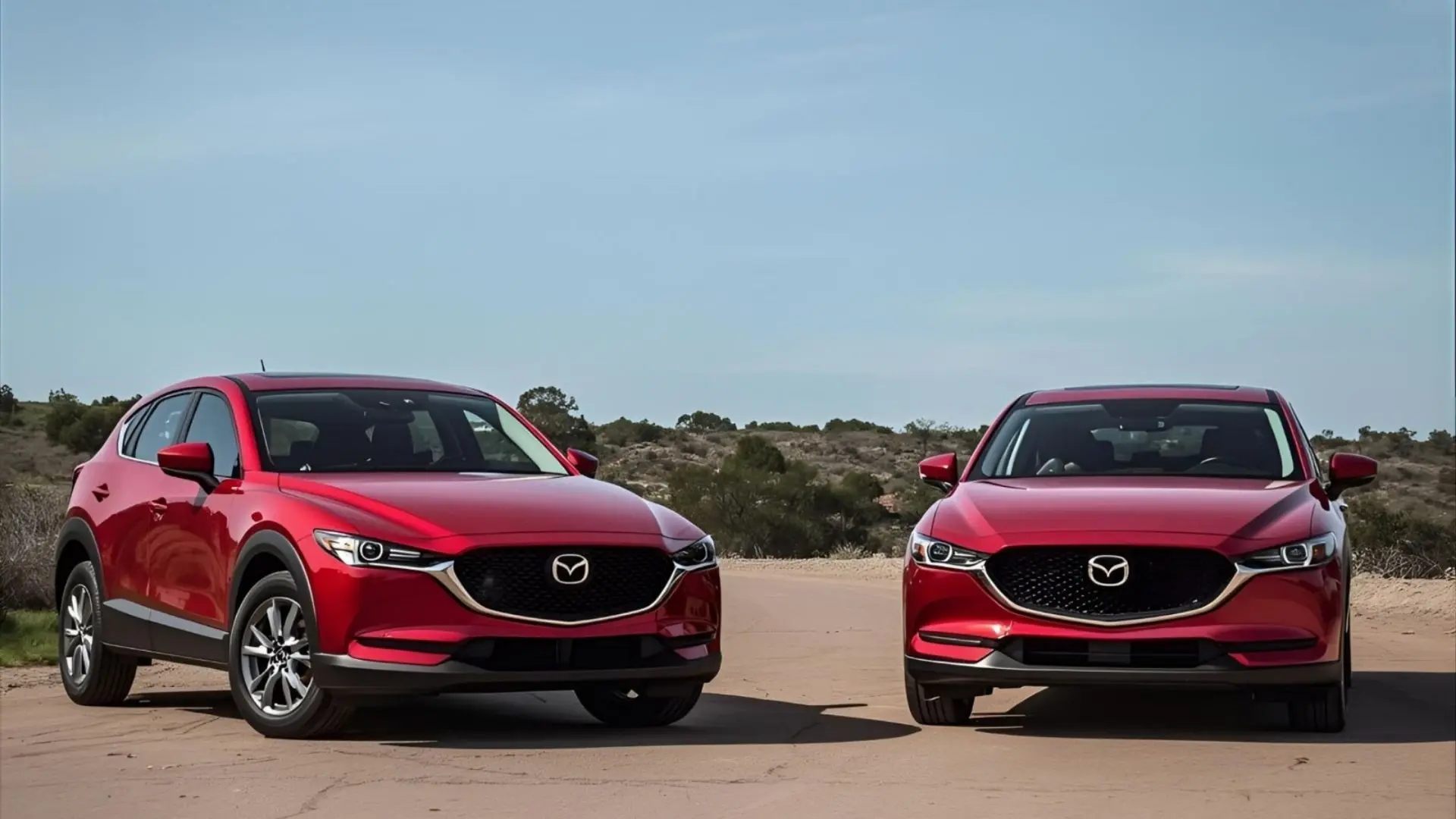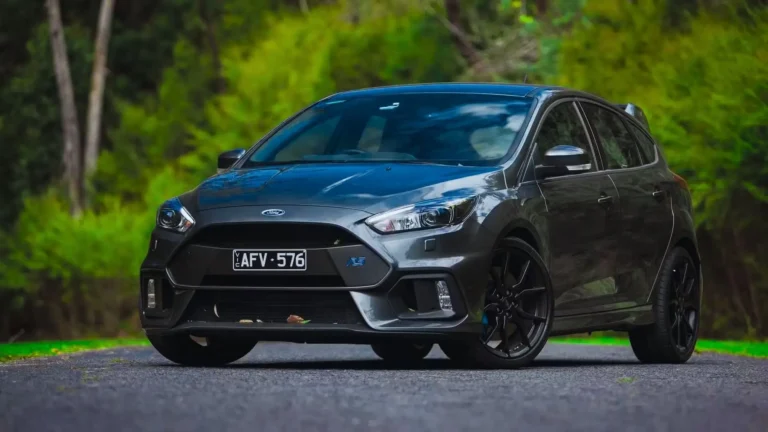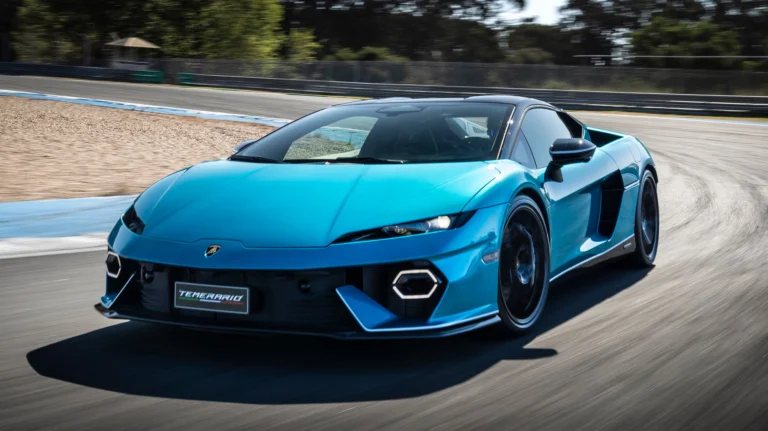Mazda CX-30 vs CX-50 Comparison: Specs, & Key Difference
Choosing between the Mazda CX-30 and CX-50 can feel tricky. Both look great and drive well. But they serve different needs. The CX-30 works best for city life. The CX-50 shines on adventures. Let’s break down everything you need to know. This guide will help you pick the right one.
Both models come from Mazda’s popular lineup. They share some features but differ in key ways. Size matters here. So does price. Your lifestyle will determine which one fits better. We’ll cover every detail to make your choice easier.
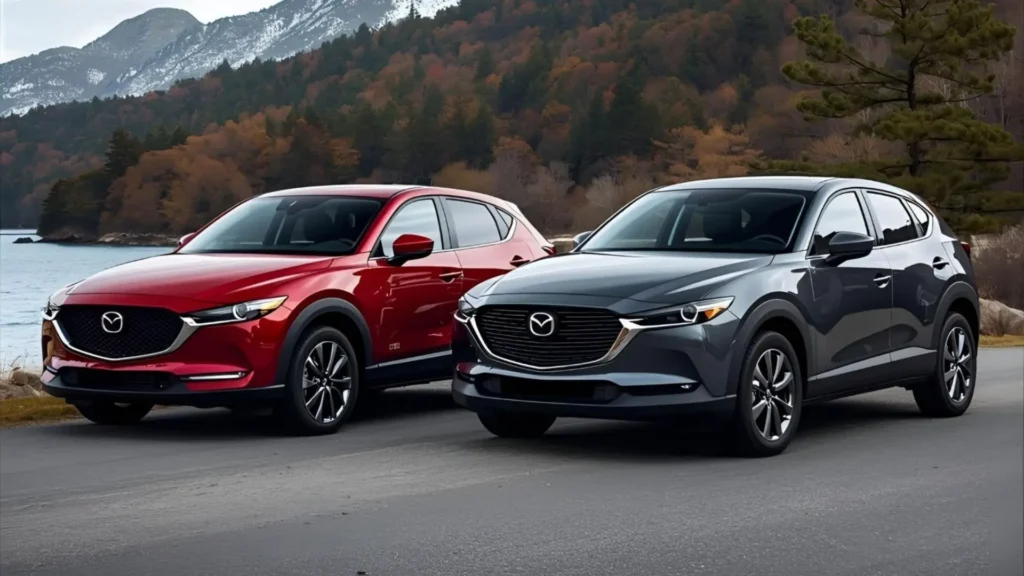
Size and Space Differences
The size gap between these two is clear. The CX-50 is bigger in every way. This affects how much stuff you can carry. It also changes how they feel on the road.

| Specification | CX-30 | CX-50 |
| Length | 173 inches | 185.8 inches |
| Width | 70.7 inches | 75.6 inches |
| Height | 61.7 inches | 63.5 inches |
| Wheelbase | 104.4 inches | 110.8 inches |
| Ground Clearance | 8 inches | 8.6 inches |
| Weight | 3,300 to 3,627 pounds | 3,515 to 3,870 pounds |
| Cargo Space (seats up) | 20.2 cubic feet | 31.4 cubic feet |
| Cargo Space (seats down) | 45.2 cubic feet | 56.3 cubic feet |
The CX-50 gives you 11 extra cubic feet of cargo room. That’s a big deal for weekend trips. The extra ground clearance helps on rough roads. You sit higher in the CX-50 too. The CX-30 fits into tight parking spots better. It’s easier to handle in busy streets.
Engine Power and Performance
Both models offer two engine choices. The base engine works fine for daily driving. The turbo engine adds serious power.
| Engine Specification | CX-30 | CX-50 |
| Standard Engine | 2.5-liter, 191 hp | 2.5-liter, 187 hp |
| Turbo Engine | 2.5-liter turbo, 227 hp (premium) | 2.5-liter turbo, 256 hp |
| Standard Torque | 186 lb-ft | 185 lb-ft |
| Turbo Torque | 310 lb-ft | 320 lb-ft |
| Transmission | 6-speed automatic | 6-speed automatic |
| Drive Options | Front-wheel or all-wheel drive | All-wheel drive (standard) |
The CX-50 comes with all-wheel drive as standard. The CX-30 charges extra for it. Both turbo engines feel quick and responsive. The power hits smoothly without jerking. City driving never feels sluggish. Highway passing is easy with either engine.
Gas Mileage Comparison
Fuel costs add up over time. The CX-30 wins here thanks to lighter weight.
| Configuration | City MPG | Highway MPG | Combined MPG |
| CX-30 2.5L FWD | 26 | 33 | 28 |
| CX-30 Turbo AWD | 22 | 30 | 25 |
| CX-50 2.5L AWD | 25 | 31 | 26 |
| CX-50 Turbo AWD | 23 | 29 | 25 |
The front-wheel CX-30 saves the most gas. It gets 33 mpg on highways. The CX-50 sits about 3 mpg lower overall. Over a year, that means spending more at the pump. But the difference isn’t huge. Both models sip fuel better than many competitors.
Interior Room and Comfort
Passenger space shows the biggest difference. The CX-50 feels roomier inside.
| Interior Dimension | CX-30 | CX-50 |
| Front Headroom | 38.1 inches | 39.1 inches |
| Front Legroom | 41.7 inches | 41.7 inches |
| Rear Headroom | 37.2 inches | 38.9 inches |
| Rear Legroom | 36.3 inches | 39.8 inches |
| Front Shoulder Room | 55.6 inches | 55.9 inches |
| Rear Shoulder Room | 53.6 inches | 53.6 inches |
| Seating Capacity | 5 people | 5 people |
Rear passengers get 3 more inches of legroom in the CX-50. Adults can stretch out back there. The CX-30 feels tighter for tall folks. Kids won’t notice the difference. Both have quality materials inside. The seats support you well on long drives. Controls are easy to reach and use.
Cargo Space Reality
This is where the CX-50 really pulls ahead. More space means more freedom.
Why CX-30 Cargo Works:
- Good for grocery runs.
- Handles weekend bags easily.
- Sports gear fits fine.
- Lower loading height helps.
- Perfect for one or two people.
Why CX-50 Cargo Wins:
- Holds 55% more stuff behind seats.
- Camping gear fits with room to spare.
- Strollers and luggage? No problem.
- Wider opening for big items.
- Roof rails for extra storage.
The CX-50 carries 31.4 cubic feet with seats up. The CX-30 only manages 20.2 cubic feet. That gap matters for families. It matters for outdoor lovers too. If you haul things regularly, go with the CX-50.
Technology Features
Both models pack modern tech. You won’t miss out either way.
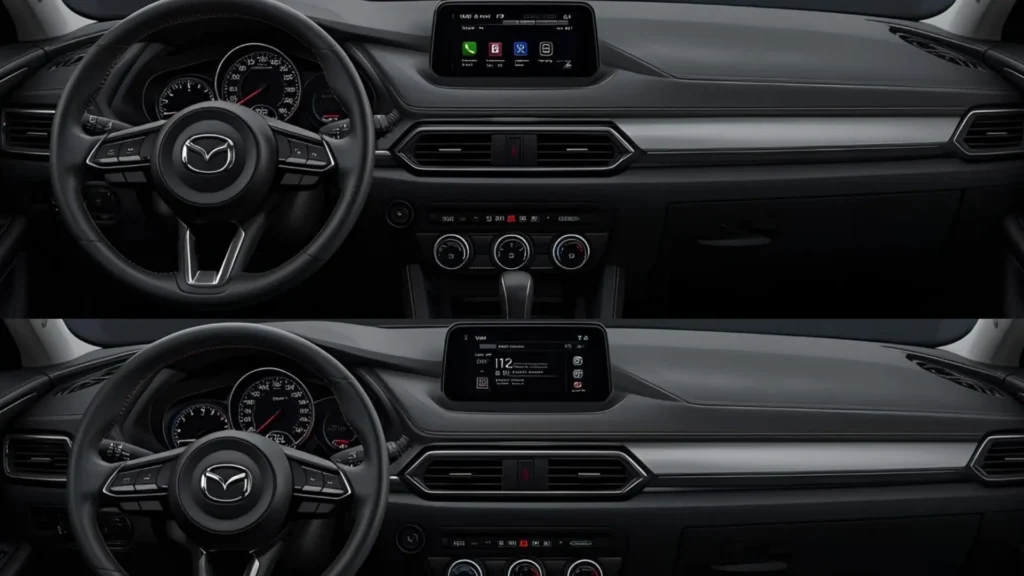
Standard Tech in Both:
- 8.8-inch screen (10.25-inch available).
- Apple CarPlay and Android Auto.
- Bluetooth streaming.
- USB ports for charging.
- Push-button start.
- Keyless entry.
- Two-zone climate control.
- Backup camera.
Safety Tech Included:
- Automatic emergency braking.
- Pedestrian detection.
- Lane keeping assist.
- Blind spot monitoring.
- Rear cross-traffic alert.
- Adaptive cruise control.
- Parking sensors (rear).
Premium Add-Ons:
- 360-degree camera.
- Front parking sensors.
- Head-up display.
- Wireless phone charging.
- Bose premium audio (12 speakers).
- Traffic sign recognition.
The infotainment system uses a knob controller. Some people love it. Others prefer touchscreens. Both phones connect wirelessly on higher trims. The sound system sounds clear and balanced. Navigation comes built-in when you upgrade.
Off-Road and Weather Driving
The CX-50 handles rougher conditions better. Ground clearance makes the difference.
CX-30 Capability:
- 6.9 inches off the ground.
- All-wheel drive optional.
- Great in rain and snow.
- Stays on paved roads best.
- Light gravel is fine.
CX-50 Capability:
- 8.6 inches off the ground.
- All-wheel drive standard.
- Handles dirt roads well.
- Off-Road Mode included.
- Beach and forest trails work.
- Better for camping trips.
That extra 1.7 inches helps more than you’d think. The CX-50 clears rocks and ruts easier. It powers through mud and sand better. The Off-Road Mode adjusts settings automatically. Neither one does serious rock crawling. But the CX-50 goes places the CX-30 can’t.
Price Breakdown
The CX-30 costs less to buy. But compare what you get.
| Trim Level | CX-30 Price | CX-50 Price |
| Base | Around $26,690 | Around $31,995 |
| Select | About $26,500 | About $31,000 |
| Preferred | Near $28,500 | Near $33,500 |
| Premium | Close to $31,000 | Close to $36,000 |
| Premium Plus | About $35,000 | About $38,500 |
The CX-50 starts $4,000 higher. But it includes all-wheel drive. Adding that to the CX-30 costs $1,400 extra. So the real gap shrinks to about $2,600. You get more space for that money. You also get better ground clearance. Consider what matters to you most.
How They Drive
Both feel sporty for SUVs. Mazda knows how to tune suspension.
CX-30 Drive Feel:
- Quick and nimble in traffic
- Steering responds fast
- Corners with confidence
- Feels lighter and more playful
- Turns in tight circles
- More like a tall car
CX-50 Drive Feel:
- Stable at highway speeds
- Smoother over bumps
- Leans a bit more in turns
- Heavier steering feel
- Plants firmly on the road
- Quieter inside
- More traditional SUV character
The CX-30 darts around like a sport sedan. You feel connected to the road. The CX-50 cruises more comfortably. Wind noise stays lower. Both stop and accelerate smoothly. Neither feels boring or numb.
Long-Term Ownership
Both models should last many years. Mazda builds them well.
What Both Offer:
- 3-year/36,000-mile basic warranty
- 5-year/60,000-mile powertrain coverage
- Oil changes every 7,500 miles
- Similar repair costs
- Good resale values
- Reliable engines
The CX-30 might save money on tires. Smaller wheels cost less to replace. The CX-50 has more parts that could need fixing. But problems are rare with either one. Previous owners report few issues. Both hold their value well when you sell.
Warranty Coverage Details
Mazda protects your purchase well. The coverage matches competitors.
Standard Warranty:
- 3 years or 36,000 miles basic
- 5 years or 60,000 miles powertrain
- 3 years roadside assistance
- No charge for first maintenance
Some states mandate longer emission warranties. Rust protection lasts 5 years unlimited miles. The warranty transfers to new owners. This helps resale value later.
Smartphone Features
Both connect your phone easily. Wireless works on newer trims.
Phone Integration:
- Apple CarPlay standard
- Android Auto standard
- Wireless on Select and up
- Multiple USB ports
- Bluetooth for calls and music
The system updates over Wi-Fi. You can use voice commands. Texts appear on the screen. Music apps work through the speakers. Your contacts sync automatically.
Climate Control Systems
Both keep you comfortable year-round. The systems work quietly.
Climate Features:
- Two-zone automatic control
- Heated front seats (most trims)
- Heated steering wheel (available)
- Rear vents for back passengers
- Air filtration system
The system learns your preferences. It adjusts before you ask. Rear passengers get decent airflow. The heated seats warm up quickly in winter.
Conclusion
The Mazda CX-30 works perfectly for city dwellers who want efficiency and easy parking. It costs less and sips less gas. The CX-50 serves outdoor lovers and families needing extra space and capability. It handles rough roads and carries more gear. Both deliver Mazda’s fun driving experience. Test drive each model to feel the differences yourself. Your lifestyle will reveal the winner.

